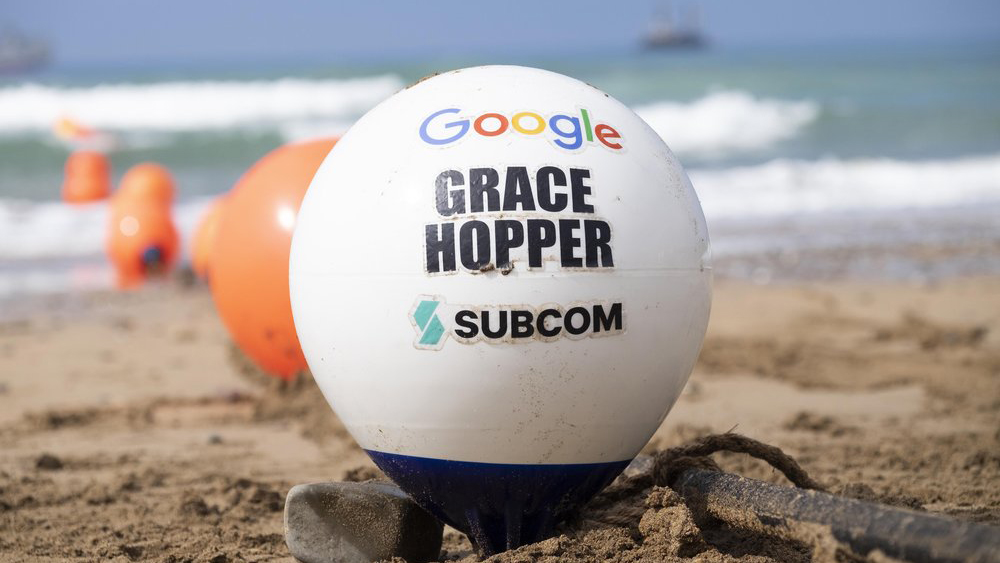Google’s Grace Hopper subsea cable lands in Cornwall
The 600km-long Google-funded cable connects the US to Europe


Google has announced that its undersea cable connecting the US with Europe has arrived in Bude, Cornwall.
The fibre-optic network cable is estimated to be around 6,000km long and is named after the American computer science pioneer Grace Hopper.
First announced in July 2020, the Google-funded cable runs from New York and splits off in the middle of the Atlantic Ocean to arrive in Bilbao, Spain and Cornwall.
Google Cloud strategic negotiator for Global Infrastructure, Jayne Stowell, described the Grace Hopper cable as an example of Google’s “ongoing investment” in the UK’s tech sector.
“Grace Hopper represents a new generation of transatlantic cable coming to the UK shores and is one of the first new cables to connect the US and the UK since 2003,” she announced in a company statement. Google has recently rolled out other subsea cables known as Curie, Dunant, Equiano, and Firmina.
The cable will use a technology known as “fibre switching,” allowing Google to manoeuvre traffic around outages and increase the reliability of its network. It will power popular Google services such as Meet, Gmail and Google Cloud – which all saw a surge in new customers due to last year’s mass shift to remote working.
“Moreover, with the ongoing pandemic fostering a new digital normal, Google-funded subsea cables allow us to plan and prepare for the future capacity needs of our customers, no matter where they are in the world. Grace Hopper will connect the UK to help meet the rapidly growing demand for high-bandwidth connectivity and services,” added Stowell.
Sign up today and you will receive a free copy of our Future Focus 2025 report - the leading guidance on AI, cybersecurity and other IT challenges as per 700+ senior executives
The second European arm of the Grace Hopper cable landed on the Bilbao shoreline on 9 September, as the “first ever Google-funded route to Spain” which will integrate an upcoming Google Cloud region in Madrid.
The entire cable is set to become operational in 2022.
Earlier this year, Google announced that its other subsea cable connecting the US and Europe, Dunant, is ready for service. First announced in 2018, the Dunant cable runs 6,400km (3,977 miles) between Virginia Beach, Virginia and Saint-Hilaire-de-Riez in the Pays de la Loire region of France. Google says it has 250Tbps of bandwidth, meaning it can transfer the entire digitised Library of Congress three times every second.
Having only graduated from City University in 2019, Sabina has already demonstrated her abilities as a keen writer and effective journalist. Currently a content writer for Drapers, Sabina spent a number of years writing for ITPro, specialising in networking and telecommunications, as well as charting the efforts of technology companies to improve their inclusion and diversity strategies, a topic close to her heart.
Sabina has also held a number of editorial roles at Harper's Bazaar, Cube Collective, and HighClouds.
-
 The six biggest security challenges coming in 2026
The six biggest security challenges coming in 2026In-depth What will be the main challenges businesses face in 2026 and what can they do to prepare?
-
 Channel focus: All you need to know about Microsoft's partner program
Channel focus: All you need to know about Microsoft's partner programChannel Focus The veteran OS developer and vendor continues to advance its strategy, particularly in Azure cloud solutions and AI
